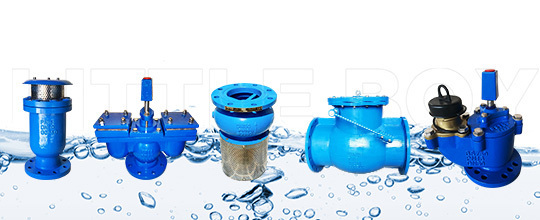
Structural morphology
Monoclinic system, a0=0.547nm, b0=0.562nm, c0=0.782nm, β= 9011 '; Z=2. [AlF6] with slightly altered crystal structure
Composed of [NaF6] octahedron and [NaF12] cubic octahedron; Two types of octahedra are connected to form chains extending along the c-axis, and the chains are filled with other 2/3 of Na, with a coordination number of 12. The [AlF6] octahedron is located at the corner top and center of the crystal cell, while the [NaF6] octahedron is located at the center of the bottom surface and the middle of the vertical edge of the crystal cell. Four of the six [NaF12] are located on the crystal cell surface, while the other two are located in the crystal cell. At approximately 500 ℃ β- Cryolite is an equiaxed crystal system with Oh3-Fm3m; A0=0.795nm; Z=4. (NH4) 3AlF6 type structure, similar to potassium sodium cryolite structure. Due to the small radius of Na+distributed in the cubic octahedron, it cannot fill the space of the cubic octahedron. Therefore, under cooling conditions, the polyhedron tilts and transforms into a monoclinic crystal system.
Orthorhombic columnar crystal, C2h-2/m (L2PC). Common simplex: parallel double-sided a {100}, b {010}, c {001}, and diagonal columns s {111}. Due to the well-developed crystal planes of {001} and {010}, the crystal shape looks similar to a cube. Double crystals often follow (110). Usually in a dense block shape, sometimes in sheet or granular form.
Physical and chemical properties
Colorless, white, sometimes appearing as light gray, light brown, light red, or brick red. Stripe white. Glass luster to grease luster. Transparent to semi transparent. Without cleavage, with {001} and {110} cracks. Embrittlement. The fracture surface is uneven. Hardness 2-3. Relative density 2.95-3.1.
Under polarizer: colorless and transparent. Biaxial crystal (+), 2V=43?. Ng=1.3396, Nm=1.3389, Np=1.3385.

Natural output is scarce and usually artificially produced. Mainly used as a flux for aluminum electrolysis; Also used as a wear-resistant additive for grinding products, it can effectively improve the wear resistance, cutting and cutting forces of grinding wheels, extend the service life and storage time of grinding wheels; Fluxes for ferroalloys and boiling steel, non-ferrous metal fluxes, casting deoxidizers, olefin polymerization catalysts, as well as emulsifiers for glass anti reflective coatings, enamel, glass whitening agents, flux for welding materials, fillers for the ceramic industry, pesticides and insecticides.
Industrial quality requirements
The largest amount of cryolite is used in the aluminum industry, with an annual consumption of approximately 700000 tons worldwide. In 1999, the market sales volume of cryolite in China was approximately 130000 tons. As a flux for electrolytic aluminum smelting, cryolite must meet certain requirements in terms of sodium aluminum molecular ratio, impurity content, water content, etc.
Firstly, the higher the ratio of sodium to aluminum in cryolite, the better. The higher the molecular ratio, the higher the current efficiency of electrolytic aluminum smelting, the less fluorine loss, and the less environmental pollution caused. Moreover, polymers are more suitable for use in industries other than the aluminum industry than cryolite
Secondly, the content of impurities such as silicon oxide, iron oxide, and phosphorus pentoxide in cryolite is lower, which directly affects the quality of aluminum ingots and the current efficiency of aluminum smelting
Thirdly, the water content of cryolite should also be as low as possible, as the presence of water will increase the consumption of cryolite.
Status of Cryolite in China
The production and application of high molecular weight cryolite have been studied and discussed in the United States and Japan, and the production of high molecular weight cryolite using sodium fluorosilicate as raw material has achieved industrial production. China's cryolite products comply with the standards of GB/T4291-2007, but each production enterprise will develop corresponding enterprise technical indicators based on the purpose and user requirements. The supply of cryolite in the market is relatively tight, which is closely related to the immature production technology of manufacturers. The products cannot meet user requirements, and some raw materials used are also relatively tight, resulting in high raw material costs, such as fluorite. In August 2008, the domestic market price of cryolite in China was around 5000 yuan/t.

Cryolite, with the chemical formula Na3AlF6, is a rare white fine crystalline mineral that has been discovered in the Ivitut large deposit on the west coast of Greenland. The main component of cryolite is sodium hexafluoroaluminate, which has stable chemical properties and is slightly soluble in water. In the molten state, cryolite can dissolve aluminum oxide, so it is used as a flux in the electrolytic aluminum industry. In addition, cryolite is widely used as a sunshade in the production of milky white glass and enamel products.

Cryolite can be divided into high molecular weight cryolite and low molecular weight cryolite based on the ratio of sodium fluoride to aluminum fluoride molecules. Most domestic aluminum electrolysis plants in China use low molecular weight cryolite with a molecular ratio of 1.8-2.2 as the electrolyte for aluminum electrolysis. Due to the superior environmental protection and economic benefits of using high molecular weight cryolite compared to low molecular weight cryolite, various aluminum electrolysis plants in China generally use high molecular weight cryolite as an electrolyte for aluminum electrolysis. Cryolite can be divided into sandy cryolite, granular cryolite, and powdered cryolite based on its physical properties.
Cryolite
1、 The characteristics of sandy cryolite are: ① low melting point, fast melting speed, which can shorten the time to enter normal working state; ② The molecular ratio can be adjusted within a large range, which can adapt to the different requirements of cryolite molecular ratio at different stages of the electrolytic cell; ③ Low moisture content and low fluoride loss; ④ Granular, with good flowability and easy transportation; ⑤ Easy to obtain raw materials and low production costs.
2、 The characteristics of granular cryolite are:
① Good fluidity, dust pollution, suitable for mechanized cutting; ② High actual yield in electrolytic production can reduce the cost of electrolytic aluminum; ③ The molecular ratio is between 2.5 and 3.0, which is particularly suitable for the opening of electrolytic aluminum cells; ④ Most particles are 1-10mm in size.
3、 The characteristics of powdered cryolite are:
① Can achieve higher particle size, usually over 200 mesh; ② The molecular ratio can reach 1.75-2.5, indicating good adjustability; ③ Ultrafine products with a pass rate of over 98% for 325 mesh can meet the requirements of special industries for cryolite.
characteristic
1. High molecular ratio, stable between 2.8-3.0; High main content, low impurity content, and high yield.
2. The use of polymers in the new start-up tank has advantages such as smoother electrolyte levels, slower shrinkage, and smoother changes in molecular ratio compared to cryolite, which is conducive to the stable maintenance of electrolyte composition; The cathode absorbs sodium evenly, which is beneficial for extending the service life of the electrolytic cell; The electrolysis temperature is reasonable, with small changes and easy to control; Low volatilization loss can effectively improve on-site operating conditions.
3. It can greatly save the amount of sodium fluoride or soda ash used and reduce production costs.
4. There are three types of states: sandy (80 mesh), powdery (200-325 mesh), and granular (0-10mm).
Granular cryolite (0-10mm): mainly used as a flux for aluminum electrolysis, especially suitable for electrolytic aluminum cell opening and normal production.

General characteristics
1. The molecular ratio can be adjusted arbitrarily between 1.0-2.8.
2. With high main content and extremely low impurity content, it is suitable for normal production of aluminum electrolysis and can partially replace AlF3 for aluminum electrolysis production.
3. There are three types of states: sand (80 mesh), powder (200-325 mesh), and granular (0-10mm), and products with different particle sizes can be provided according to user requirements. The application differences of products in different states are as follows:
Powdered cryolite (200-325 mesh)
This product is mainly used as a flux for aluminum electrolysis, and is also suitable for wear-resistant fillers for resin grinding wheels, metal flux glass shading agents, enamel whitening agents, etc. The addition method is simple and easy to operate when using.
Sand like cryolite (80 mesh)
Sand like cryolite, the product has the characteristics of low melting point and fast melting speed. It can shorten the time to enter normal working state. The sand like cryolite particles are relatively large and have good flowability. Most of the particles are concentrated in 240-80 mesh, making it easy for mechanized and automated cutting.
Granular cryolite (0-10mm)
Mainly used as a flux for aluminum electrolysis. High yield in the production of electrolytic aluminum can reduce the cost of electrolytic aluminum; And it has the advantages of good fluidity and no dust pollution, suitable for mechanized cutting.

Chemical name: Sodium hexafluoroaluminate, also known as artificial cryolite or synthetic cryolite, is a colored powder widely used in the electrolytic aluminum industry. It is also used in industries such as grinding wheels, abrasives, steelmaking, glass, ceramic casting, accelerator, copper casting, steelmaking, rubber, pesticides, etc.
There is no essential difference between artificial cryolite and natural cryolite, and there is no significant difference in their composition and function. Natural cryolite is produced less and most of it has already been mined. Due to the importance of cryolite in the production of electrolytic I industry, fluorite is now mostly used to synthesize cryolite for I industry use, which we call "artificial cryolite".
Artificial cryolite is actually a type of cryolite synthesized artificially for industrial production. Natural cryolite is extracted from natural minerals, but their cryolite products do not have essential differences in composition and function. Therefore, artificial cryolite and natural cryolite are the same products, only obtained in different ways.







